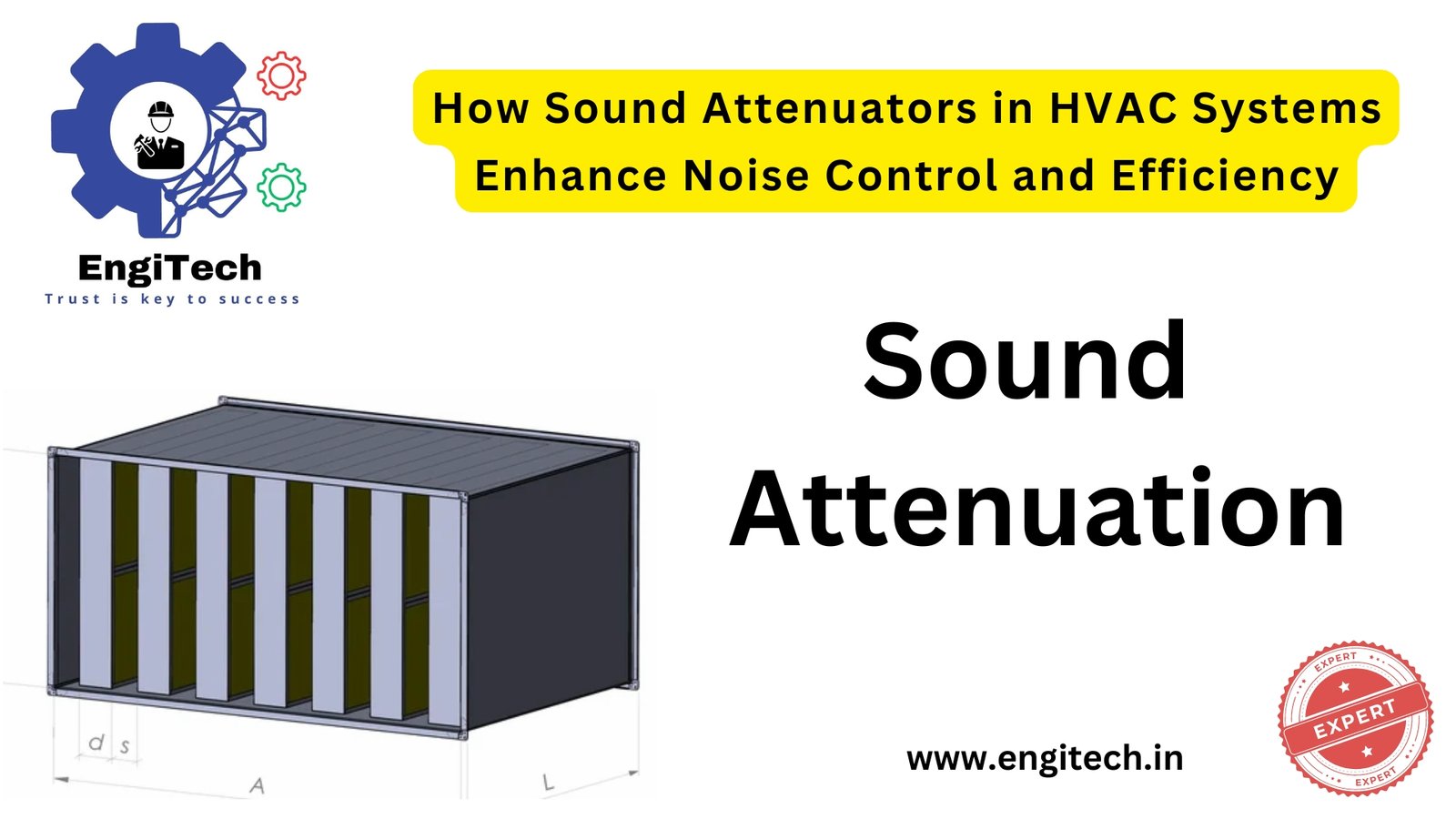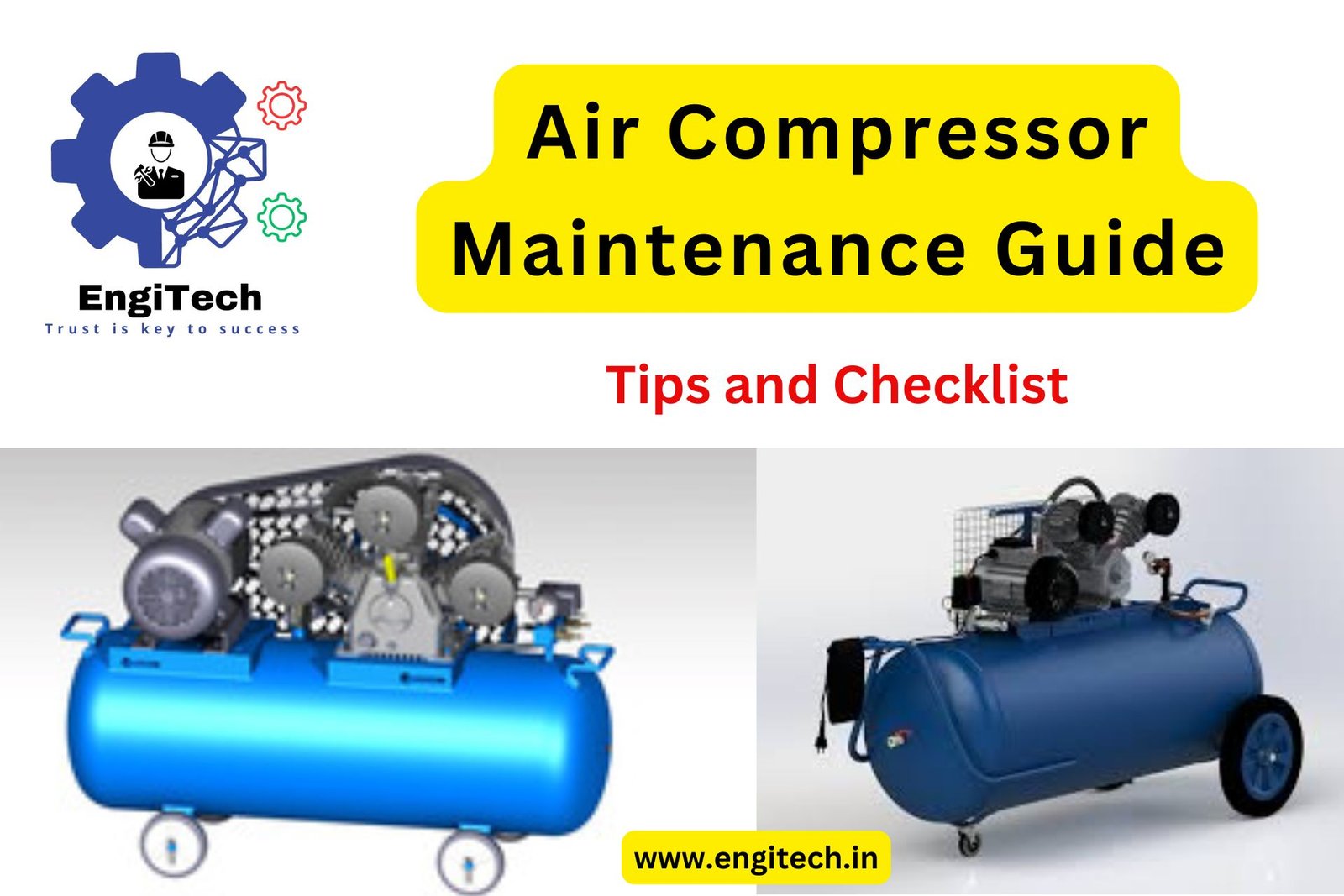How Sound Attenuators in HVAC Systems Enhance Noise Control and Efficiency

Did you know that prolonged exposure to noise levels above 85 decibels can permanently damage your hearing? In today’s increasingly noisy world, the quest for peace and quiet has never been more urgent. Whether you’re managing a commercial HVAC system, designing a recording studio, or simply trying to create a more comfortable living space, sound attenuators offer a proven solution to your noise control challenges. These remarkable devices reduce unwanted sound transmission while allowing air or gas to flow freely—a critical balance in many industrial, commercial, and residential applications.
This comprehensive guide will explore everything you need to know about sound attenuators, from basic principles to advanced selection criteria and installation best practices.
Table of Contents
What Are Sound Attenuators?
Sound attenuators, also known as acoustic attenuators or sound silencers, are specialized devices designed to reduce noise levels in air or gas systems without significantly impeding flow. Unlike simple barriers that block sound, attenuators employ sophisticated acoustic principles to absorb and dissipate sound energy, effectively muffling unwanted noise while allowing necessary airflow to continue.
The Science Behind Sound Attenuators
At their core, sound attenuators work through a combination of several acoustic principles:
- Sound absorption: Specialized acoustic materials convert sound energy into small amounts of heat through friction
- Reflection: Strategic design elements cause sound waves to reflect and interfere with each other
- Resonance control: Carefully tuned chambers target specific problematic frequencies
- Path extension: Longer, more complex paths force sound to travel farther, naturally attenuating over distance
These principles work in concert to create effective noise reduction across a wide frequency spectrum, making sound attenuators remarkably versatile tools for noise control.
Types of Sound Attenuators
The field of acoustic attenuation encompasses several distinct device types, each with specific applications and advantages:
Reactive Attenuators
Reactive attenuators employ precisely designed chambers and passages to reflect sound waves back toward their source. This creates destructive interference, effectively canceling out particular frequencies. Common in automotive muffler systems and industrial applications, reactive attenuators excel at targeting low-frequency noise but may create more flow resistance than other types.
Dissipative Attenuators
Dissipative attenuators use sound-absorbing materials—typically mineral wool, fiberglass, or specialized foams—to convert sound energy into heat through friction. These attenuators are particularly effective against mid to high-frequency noise and find extensive use in HVAC systems, where their relatively low pressure drop is advantageous.
Combined Attenuators
Many modern sound attenuators incorporate both reactive and dissipative elements, creating hybrid systems that provide broadband noise reduction. These sophisticated attenuators can be custom-designed to address specific noise profiles while maintaining optimal flow characteristics.
Duct Silencers
Specifically designed for HVAC and ventilation systems, duct silencers integrate directly into ductwork to reduce noise transmission throughout a building. These specialized attenuators come in rectangular, circular, and elbow configurations to accommodate various system designs.
Applications of Sound Attenuators
Sound attenuators find use across numerous industries and settings where noise control and proper airflow must coexist. Some primary applications include:
HVAC Systems
In commercial and institutional buildings, sound attenuators are critical components that prevent mechanical equipment noise from disturbing occupants. Properly designed attenuation systems ensure that the background noise in offices, classrooms, hospitals, and other sensitive environments remains at acceptable levels while maintaining required airflow for ventilation and climate control.
Industrial Facilities
Manufacturing plants, power generation facilities, and other industrial settings often contain extremely loud equipment that can pose occupational health risks and community disturbance issues. Industrial-grade sound attenuators help businesses comply with workplace safety regulations and environmental noise ordinances by reducing emissions from exhaust systems, compressors, blowers, and other noisy processes.
Power Generation
Gas turbines, diesel generators, and other power production equipment generate substantial noise that must be controlled. Specialized attenuators for these applications must withstand high temperatures and pressures while providing significant noise reduction to protect workers and surrounding communities.
Music and Broadcasting Facilities
Recording studios, radio stations, and concert venues employ sophisticated sound attenuation systems to create acoustically isolated spaces. These specialized attenuators must provide exceptional noise reduction while maintaining precise airflow for ventilation and climate control without introducing any system noise that could interfere with sensitive recording equipment.
Residential Applications
Even in homes, sound attenuators can significantly improve quality of life by reducing noise from HVAC systems, bathroom fans, and other mechanical equipment. Residential attenuators are typically smaller and designed with aesthetic considerations in mind, often integrating seamlessly into existing ductwork.
Key Benefits of Sound Attenuators
The implementation of proper sound attenuation systems offers numerous advantages beyond simple noise reduction:
Improved Environmental Quality
By reducing noise pollution, sound attenuators create more comfortable, productive spaces for work, learning, healing, and living. Research consistently shows that lower ambient noise levels improve concentration, reduce stress, and enhance overall well-being.
Regulatory Compliance
Many jurisdictions enforce strict noise control regulations for both occupational safety and environmental protection. Sound attenuators help facilities meet these requirements, avoiding potential fines and operational restrictions.
Equipment Protection
Excessive noise often indicates inefficient energy transfer and potential mechanical stress. By reducing sound transmission, attenuators can indirectly contribute to longer equipment life and more efficient operation.
Enhanced Property Value
Buildings with effective noise control systems typically command higher rents and sale prices, making sound attenuation a valuable investment for property owners and developers.
Energy Efficiency
While not their primary purpose, well-designed sound attenuators can be integrated into HVAC systems without significantly increasing energy consumption through careful engineering that minimizes pressure drop and system resistance.
How to Select the Right Sound Attenuator
Choosing the appropriate sound attenuator requires careful consideration of several factors:
Noise Profile Analysis
Before selecting an attenuator, it’s essential to understand the specific noise problems you’re addressing. Different frequencies require different attenuation approaches:
- Low-frequency noise (below 250 Hz): Often requires reactive elements or larger dissipative attenuators
- Mid-frequency noise (250-2000 Hz): Typically addressed effectively with standard dissipative attenuators
- High-frequency noise (above 2000 Hz): Usually the easiest to attenuate with basic absorptive materials
Professional acoustic analysis can identify your specific noise profile and guide attenuator selection for optimal results.
System Requirements
Your attenuator must integrate seamlessly with existing systems without compromising performance:
- Airflow requirements: Ensure the attenuator can handle the required volume without excessive pressure drop
- Space constraints: Consider available installation space when selecting attenuator dimensions
- Temperature and humidity conditions: Choose materials suitable for your environmental conditions
- Fire and safety regulations: Verify compliance with applicable building and safety codes
Performance Metrics
When evaluating sound attenuators, several key specifications deserve attention:
Insertion Loss
Measured in decibels (dB), insertion loss indicates how much noise reduction the attenuator provides across different frequency bands. Higher values indicate greater noise reduction, but remember that needs vary by frequency—a good attenuator matches its performance profile to your specific noise problems.
Pressure Drop
This measure (typically in inches of water column) indicates how much the attenuator restricts airflow. Lower values mean less resistance and lower energy costs for moving air through the system. Modern attenuators strive to balance noise reduction with minimal pressure drop.
Self-Noise
Some attenuators generate their own noise as air passes through them. This specification indicates how much sound the device itself creates, with lower values being preferable, especially in sensitive applications like recording studios.
Durability and Maintenance Requirements
Consider the expected lifespan of different attenuator types and their maintenance needs. Some require periodic replacement of acoustic materials, while others may operate effectively for decades with minimal attention.
Installation Best Practices
Proper installation is crucial for attenuator performance and longevity:
System Integration
Sound attenuators should be placed strategically within systems for maximum effectiveness:
- Install attenuators close to noise sources when possible
- Consider airflow direction and system dynamics
- Provide straight ductwork runs before and after the attenuator when possible
- Ensure adequate access for inspection and maintenance
Avoiding Common Pitfalls
Many attenuation systems underperform due to avoidable installation errors:
- Flanking paths: Sound can bypass attenuators through structural elements, gaps, or alternative routes; comprehensive acoustic design addresses all potential transmission paths
- Undersizing: Attenuators that are too small for the application create excessive pressure drop and inadequate noise reduction
- Poor sealing: Gaps around attenuator connections can significantly reduce effectiveness
- Vibration transmission: Mechanical isolation may be necessary to prevent vibration transfer through mounting systems
Professional Consultation
For critical applications, professional acoustic engineers can provide invaluable expertise:
- Comprehensive system modeling and performance prediction
- Custom attenuator design for unique challenges
- Integration with broader noise control strategies
- Post-installation testing and verification
Maintenance and Care
Even the best sound attenuators require periodic attention to maintain optimal performance:
Regular Inspection
Establish a schedule for visual inspection of attenuators, looking for:
- Damaged or degraded acoustic materials
- Accumulated dust or debris that could restrict airflow
- Signs of moisture damage or corrosion
- Loose connections or mounting hardware
Cleaning Procedures
Different attenuator types require specific cleaning approaches:
- Dissipative attenuators with exposed acoustic materials may need careful vacuuming or compressed air cleaning
- Reactive attenuators typically require less frequent maintenance but should be inspected for obstructions
- Some specialized attenuators may have manufacturer-specific cleaning protocols
Performance Testing
Periodic acoustic testing can verify that attenuators continue to provide the expected noise reduction. This is particularly important in critical applications like healthcare facilities or recording studios.
Emerging Trends in Sound Attenuation Technology
The field of acoustic attenuation continues to evolve with several exciting developments:
Advanced Materials
New acoustic materials offer improved performance with reduced environmental impact:
- Sustainable alternatives to fiberglass and mineral wool
- Nanomaterials with exceptional acoustic properties
- Water-resistant and antimicrobial treatments for use in challenging environments
Active Noise Control Integration
Some cutting-edge attenuators incorporate active noise control (ANC) technology, which uses microphones, speakers, and digital signal processing to create “anti-noise” that cancels out specific frequencies. This hybrid approach can provide superior low-frequency performance in a more compact package.
Computational Design Optimization
Advanced simulation software now allows for highly optimized attenuator designs:
- Computational fluid dynamics (CFD) minimizes pressure drop
- Finite element analysis predicts acoustic performance with unprecedented precision
- Generative design algorithms create novel geometries with superior performance characteristics
Smart Attenuators
The Internet of Things (IoT) has reached sound attenuation with the development of smart systems that:
- Monitor performance in real-time
- Adapt to changing noise conditions
- Alert maintenance personnel to degradation or failures
- Provide performance data for system optimization
Common Questions About Sound Attenuators
How much noise reduction can I expect from a sound attenuator?
Typical commercial sound attenuators provide noise reduction ranging from 15 to 45 decibels, depending on the frequency, attenuator design, and length. Low frequencies (bass sounds) are generally more difficult to attenuate than high frequencies. For perspective, a 10 dB reduction sounds approximately half as loud to human ears.
Will a sound attenuator affect my system’s efficiency?
All sound attenuators create some resistance to airflow, measured as pressure drop. However, modern designs minimize this impact through aerodynamic optimization. When properly sized, a quality attenuator typically adds minimal operational costs while providing substantial acoustic benefits.
How long do sound attenuators last?
With proper installation and maintenance, industrial-grade sound attenuators can last 15-20 years or more. Factors affecting lifespan include environmental conditions, material quality, and system usage patterns. Dissipative attenuators in harsh environments may require acoustic material replacement after 7-10 years.
Can I install a sound attenuator myself?
Simple residential attenuators might be suitable for DIY installation if you have basic HVAC experience. However, commercial and industrial applications typically require professional installation to ensure proper performance, system integration, and compliance with building codes. Improper installation can result in inadequate noise control and system inefficiency.
Are sound attenuators worth the investment?
When evaluating the return on investment for sound attenuation, consider:
- Regulatory compliance requirements and potential fines for non-compliance
- Productivity benefits of improved acoustic environments
- Energy costs associated with pressure drop
- Property value enhancement
- Occupant health and satisfaction
For most applications, properly selected sound attenuators provide exceptional value relative to their cost, particularly when considering their long service life.
Case Studies: Sound Attenuators in Action
Hospital HVAC Noise Reduction
A major metropolitan hospital struggled with excessive HVAC noise in patient recovery areas. After acoustic analysis identified specific problematic frequencies, custom attenuators were installed at strategic locations in the ventilation system. The result was a 22 dB noise reduction, bringing ambient levels below 35 dBA—the recommended maximum for healing environments. Patients reported improved sleep quality, and staff noted reduced stress levels during long shifts.
Industrial Manufacturing Facility
A manufacturing plant faced community complaints and potential regulatory action due to noise emissions from exhaust stacks. Implementation of specialized high-performance attenuators reduced external noise by over 30 dB, bringing levels well within compliance limits. The facility was able to continue 24-hour operations without disrupting neighboring residential areas.
Recording Studio Ventilation
A professional recording studio required absolutely silent ventilation systems to prevent background noise during sensitive recordings. A combination approach using oversized attenuators, vibration isolation mounts, and low-velocity air distribution achieved background noise levels below the threshold of measurement equipment (NC-15), ensuring pristine recording conditions without compromising air quality.
Conclusion
Sound attenuators represent a sophisticated yet practical solution to the persistent challenge of noise control in our increasingly mechanical world. By understanding the principles, types, and applications of these devices, you can make informed decisions about implementing acoustic attenuation in your specific context—whether industrial, commercial, or residential.
The right sound attenuator, properly selected and installed, offers benefits far beyond simple noise reduction: improved occupant health and productivity, regulatory compliance, equipment protection, and enhanced property value. As technology continues to advance, we can expect even more effective and efficient attenuation solutions to emerge, further improving our acoustic environments.
When approaching any noise control project, remember that comprehensive analysis and thoughtful system design will yield the best results. Consider consulting with acoustic professionals for complex applications, and pay attention to installation details that can significantly impact performance. With these considerations in mind, sound attenuators can transform noisy, stressful environments into comfortable, productive spaces for work, healing, learning, and living.
For more expert insights and the latest innovations in HVAC sound control, visit EngiTech. Stay informed with our comprehensive resources on industrial drying technologies, blowers, and HVAC solutions.


